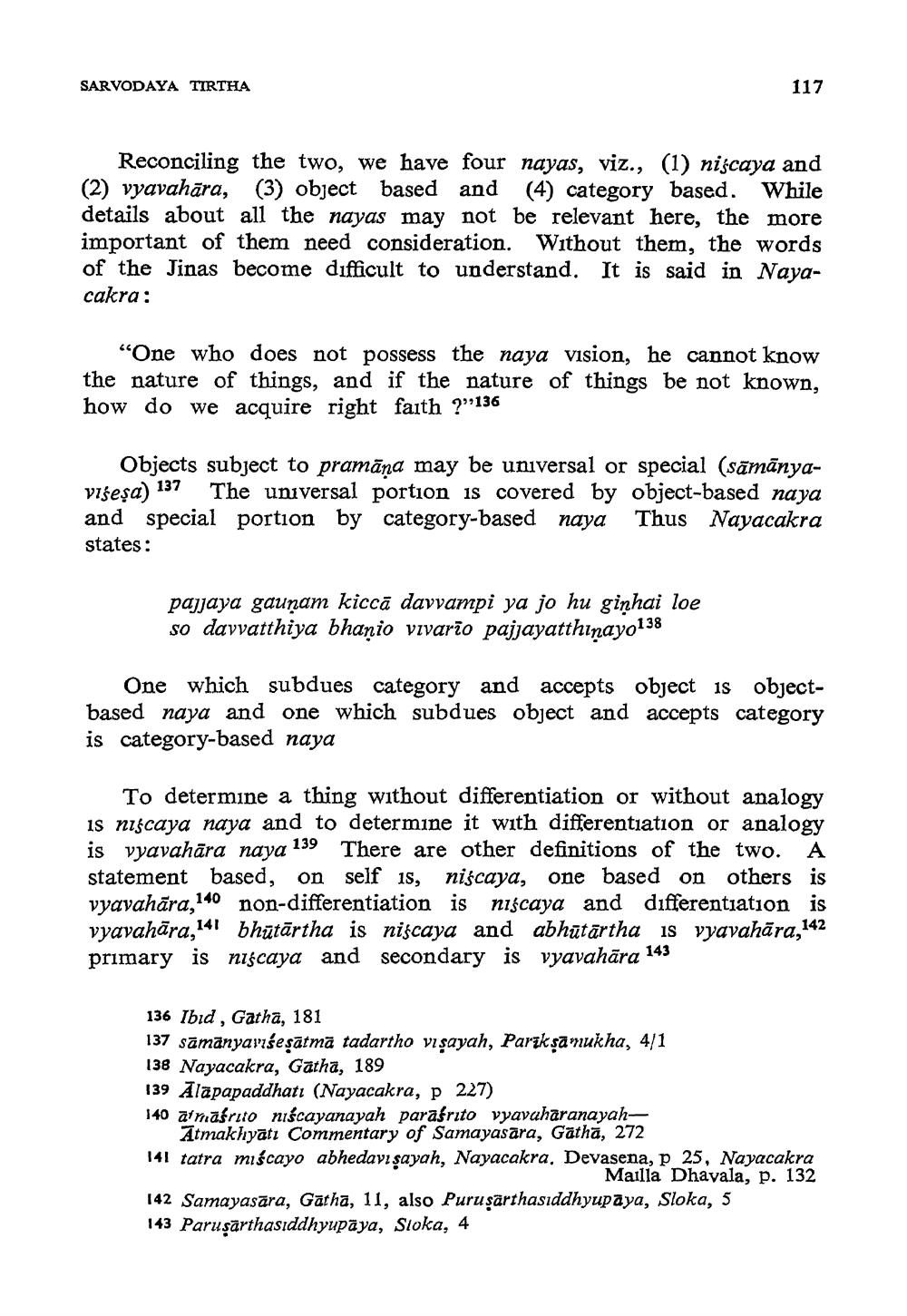________________
SARVODAYA TIRTHA
Reconciling the two, we have four nayas, viz., (1) niscaya and (2) vyavahāra, (3) object based and (4) category based. While details about all the nayas may not be relevant here, the more important of them need consideration. Without them, the words of the Jinas become difficult to understand. It is said in Nayacakra:
"One who does not possess the naya vision, he cannot know the nature of things, and if the nature of things be not known, how do we acquire right faith ?"136
117
137
Objects subject to pramāna may be universal or special (samanyaviseṣa) The universal portion is covered by object-based naya and special portion by category-based naya Thus Nayacakra
states:
pajjaya gaunam kiccā davvampi ya jo hu ginhai loe so davvatthiya bhanio vivario pajjayatthiṇayo138
One which subdues category and accepts object is objectbased naya and one which subdues object and accepts category is category-based naya
139
To determine a thing without differentiation or without analogy is niscaya naya and to determine it with differentiation or analogy is vyavahāra naya There are other definitions of the two. A statement based, on self 15, niscaya, one based on others is vyavahāra,140 non-differentiation is niscaya and differentiation is vyavahara,141 bhutartha is niscaya and abhutartha is vyavahāra,1 142 primary is niscaya and secondary is vyavahāra 143
136 Ibid, Gatha, 181
137 samanyaviseṣātmā tadartho viṣayah, Parikṣamukha, 4/1 138 Nayacakra, Gatha, 189
139 Alapapaddhati (Nayacakra, p 227)
140 atmaśrito niscayanayah parafrito vyavaharanayahAtmakhyatı Commentary of Samayasara, Gatha, 272
141 tatra miścayo abhedavışayah, Nayacakra, Devasena, p 25, Nayacakra Mailla Dhavala, p. 132
142 Samayasara, Gatha, 11, also Puruşarthasiddhyupaya, Sloka, 5 143 Paruşarthasiddhyupaya, Stoka, 4




